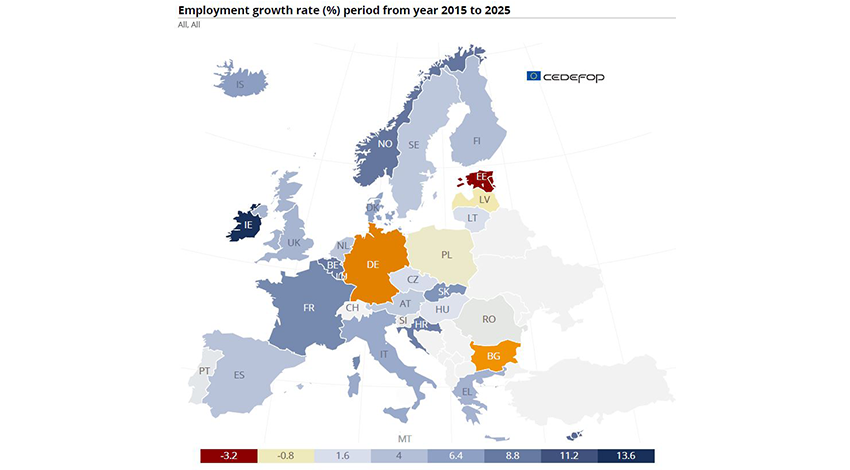How will skill supply and demand develop over the next decade? Cedefop’s data and analyses for the European Union and – for the first time – each Member State, provide insights to help develop vocational education and training policies.
The forecasts look at prospects up to 2025 for employment growth, developments in sectors, the types of job opportunities that may emerge, changes in qualification levels and demographic trends.
Cedefop’s analyses also show how general European trends mask some sharp differences between Member States. In some countries employment is already higher than it was before the economic crisis began in 2008. In others, employment is not forecast to recover to pre-crisis levels even by 2025.
Although the business and other services sector will drive employment growth in the EU overall, it is not the sector with most employment job growth in every country. Similarly, while jobs in the primary sector and manufacturing are expected to fall in the EU overall, some countries should see an increase in jobs in these sectors.
The types of jobs on offer – ranging from highly-qualified professionals to skilled agricultural workers – also vary across countries. And while the prospects are that employers and jobs will become more demanding by requiring high-level qualifications, most people are expected to be employed in jobs requiring medium-level qualifications. In the meantime Europe’s labour force is becoming better qualified. In almost every Member State more people are forecast to have high- and medium-level qualifications.
Economic growth is, of course, important for job creation, but Cedefop’s forecasts show that demography is also playing a major role. Most job opportunities between now and 2025 will arise because of the need to replace people who are either moving to another job or leaving the labour market, for example to retire. Europe’s labour force is ageing, but faster in some counties than in others.
See the skill supply and demand forecast data for the EU as well as all 28 Member States Iceland, Norway and Switzerland here.
Forecasts country reports for each Member State are available here.
An analysis for skill supply and demand trends up to 2025 for the EU as a whole is outlined in the Cedefop briefing note: Europe’s uneven return to job growth
As read on the Cedefop website.

